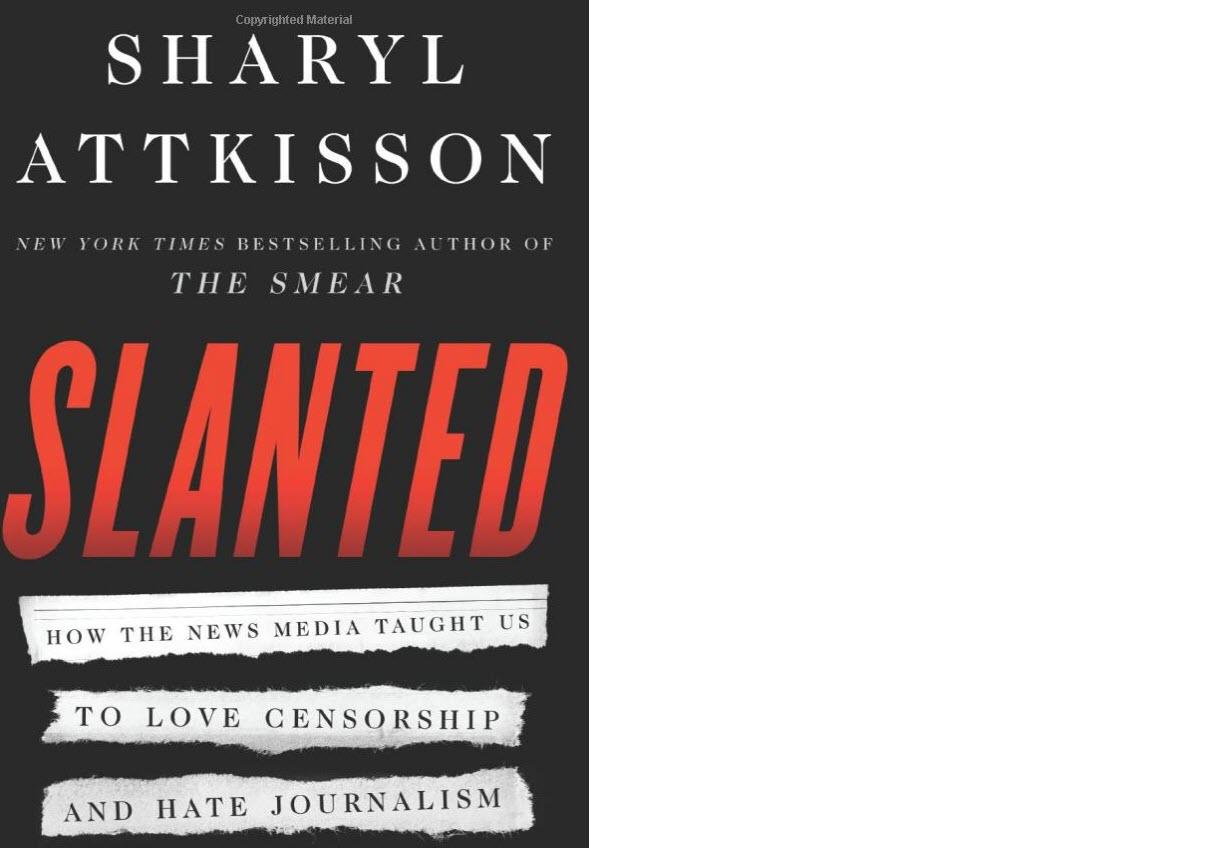Feature your business, services, products, events & news. Submit Website.
Breaking Top Featured Content:
The New ‘Woke’ Times: The Death Of News As We Once Knew It

Tyler Durden
Wed, 11/25/2020 – 15:00
Authored by Sharyl Attkisson via RealClearBooks.com,
The following is an excerpt from “Slanted: How the News Media Taught Us to Love Censorship and Hate Journalism” by Sharyl Attkisson. (emphasis ours)
There’s no more exemplary sign of the death-of-the-news-as-we-once-knew-it than the public unraveling of The New York Times, once perhaps of the most well-respected news organizations on the planet. The newspaper’s series of unfortunate, self-inflicted events, highlighted in a disastrous summer of 2019, led one insider to refer to the publication as “The New Woke Times.” A leaked transcript of a staff meeting following a string of public embarrassments punctuated the point.
I can’t help but think that the angst-filled newsroom at the New York Times might not have to expend so much effort dodging flak if management had allowed the paper’s public editor to do her job. The public editor was the internal ombudsman assigned “to help keep the Times and its coverage honest in an increasingly commercialized and politicized news environment.” This was the person assigned to address major public criticism and, to some degree, inoculate the newsroom from having to get mired so deeply in controversies over its coverage.
The position of public editor at the Times was first created after the Jayson Blair scandal. Blair was the Times reporter who resigned in disgrace in 2003 after it was discovered that his stories—some of them published on the front page—were fabricated and plagiarized. The controversy led to the resignation of Times executive editor Howell Raines and managing editor Gerald Boyd. The new public editor would serve as a check and balance to help uncover and remedy journalistic misdeeds sooner.
In May 2016, Elizabeth Spayd became the Times’ last public editor. During her relatively short tenure, she fielded criticism about controversies such as the Times’ increase in “native advertising,” meaning ads seamlessly worked into the fabric of the publication as if they were a news story. Spayd called the uncomfortable mix of commercials and journalism a proven winner in terms of revenue. She noted that “The vast majority of readers apparently find it un- objectionable.” She drew that conclusion in part, she said, because she had received few complaints about it. Actually, the lack of complaints might have been because most readers don’t recognize native advertising when they are reading it. That’s the whole point: it is advertising disguised as news.
In any event, during the course of her work, Spayd sometimes criticized her own publication. In turn, she was sometimes criticized by Times staffers and outside journalists. That comes with the territory. Some of Spayd’s critics took their objections to left-leaning outlets such as The Atlantic, which worked to controversialize and undermine her. The Atlantic printed accusations of her being “inclined to write what she doesn’t know,” said her work had become “iconic in its uselessness and self-parody,” and accused her of “squandering the most important watchdog job in journalism.”
In May 2017, Times publisher Arthur Ochs Sulzberger, Jr., suddenly eliminated the job of public editor. In a memo explaining Spayd’s termination, he argued the position was now superfluous because the Internet had become the media’s watchdog.
“Our followers on social media and our readers across the Internet have come together to collectively serve as a modern watchdog, more vigilant and forceful than one person could ever be,” he stated. “Our responsibility is to empower all of those watchdogs, and to listen to them, rather than to channel their voice through a single office.”
So as the 2020 presidential campaign heated up, the Times’ disastrous summer of 2019 drew to a merciful close. If, as you read these words, you remember a dominant narrative on the news and the Internet being President Trump as a racist and divisive leader in a divided America, you know it is at least partly the result of a plan executed by the New York Times. Never did Trump’s slur, “the failing New York Times,” seem to hit closer to home.
The New “Woke” Times
If there were any hope that the cacophony of high-profile embarrassments at the Times would prompt a rational reexamination of the newspaper’s slant, it was not to be. The exclamation point was added in June 2020 in what became perhaps the most bizarre of the incidents. Once again, the media finds itself giving time and space to news about the news rather than, well, to news itself.
The trigger of this disaster is an op-ed written for the Times by Senator Tom Cotton, an Arkansas Republican, titled “Send in the Troops.” It advocated for dispatching military assistance to US cities wracked by violence amid protests against police brutality. Sending in the troops is a position that has plenty of both supporters and de- tractors. This is typical of topics tackled in op-ed pieces. Most people would argue that’s the point: to present diverse views.
But that’s not how a lot of Times staffers apparently see things. After the piece is published, they launch an internal revolt and take to social media to denounce their own newspaper for having dared to publish Cotton’s words. “Running this puts black @NYTimes staff in danger,” claim staffers and their supporters in unified tweets.
Then New York Times employees pen a letter to Times management demanding the newspaper publish a refutation of Cotton’s position.
The letter is addressed to editorial page editor James Bennet and his two deputies, chief executive Mark Thompson, chief operating officer Meredith Kopit Levien, executive editor Baquet, and publisher A. G. Sulzberger, who by then had taken over the newspaper’s helm from his father. In the fallout, Bennet admits that he didn’t read the Cotton op-ed before it was published and left that job up to his number two.
As demanded by the mob of staff, the Times adds an editor’s note to Cotton’s column. It says the op-ed had been approved in a “rushed” editorial process that did not meet its standards. Sulzberger emails employees, “Last week we saw a significant breakdown in our editing processes, not the first we’ve experienced in recent years.”
Days later, editorial chief Bennet is finished. The Times announces he has resigned. The same newspaper that defended controversial op-eds such as the one signed by Russian president Vladimir Putin in 2013, and even an anti-Trump opinion piece that hadn’t been signed at all and was published anonymously, was now adjudicating the words of a prominent US senator to be just too incendiary.
It is a strange place, indeed, where news reporters can editorialize but op-ed editorials cannot. On June 1, 2020, after President Trump walked through a public Washington, DC, park amid national protests and riots—to a church that had been burned a block away—Times chief White House correspondent Peter Baker, tweets:
Trump just stands in front of the church and holds up a bible while posing for photos . He does not even go inside for a faux tour of the damage or make a pretense of having any purpose in going there other than to pose for photos .
The latest developments remove any lingering doubt as to how the Times sees its modern mission: serving and pleasing the left-wing activists on its staff and the liberal activists who dominate on the news and social media. Arthur Ochs Sulzberger’s dictum when he fired the newspaper’s public editor in May 2017 had come to pass in a terrible way. Recall that, at the time, he declared that the Times’ followers on social media would “collectively serve as a modern watch- dog, more vigilant and forceful than one person could ever be.”
The Times let itself become hopelessly slanted. Captive to organized feedback on social media. Beholden to irredeemably conflicted staff members. Consumed by internal demons.
Make no mistake: other media outlets are taking note. In this way, they are motivated to self-censor news and information, lest they draw the wrath of the mobs. One editorial figure at a major international publication who did not want to be identified recounted numerous pieces he has recently killed for fear of the organized backlash.
“They can bankrupt me,” he tells me. “Facebook, Twitter, Google— they can ruin you in a matter of hours. For somebody like us, they can destroy you. So what do we do? We pull our punches. To raise certain issues is to cut your own throat.”
He continues, “The newsman in me says, ‘Tell the truth,’ and that sounds great. But if I do that and destroy [my publication] in the process, what kind of pyrrhic victory is that?”
The information landscape becomes ever narrower, squashing diversity of thought and facts. Pretty soon, we won’t know what we don’t know. And that will be that.
One former insider wrote to me after Bennet’s resignation and referred to his alma mater as “The New Woke Times.”
“The NYT still plays an outsized role in shaping the news agenda in America,” he tells me.
“The news business is highly competitive. If the leader has abandoned its own standards and history of fair and rigorous re- porting, why should the others be any different?”
Continue reading at ZeroHedge.com, Click Here.

